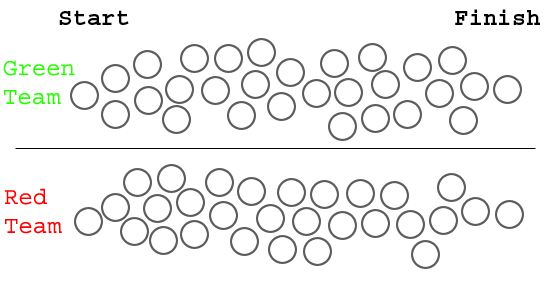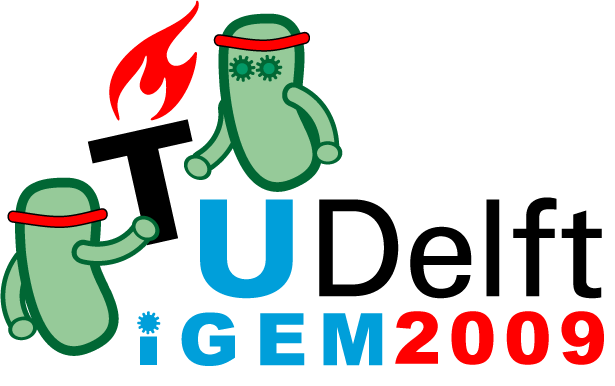Team:TUDelft
From 2009.igem.org
Welcome to the 2009 Bacterial Relay Race
We are currently working on a cell to cell communication system with possible applications in reducing antibiotic resistance of bacteria. Furthermore, we are working on ethical issues in synthetic biology. The survey on reductionism in synthetic biology can be found here: [http://spreadsheets.google.com/viewform?formkey=dElEZjI4Vk0wWmxHTWoycG03b2RrQ3c6MA.. Survey]. Your contribution would be very much appreciated.
The Team
This is the second year the TUDelft participates in the iGEM competition. The group consists of 7 students, 4 instructors and a lot of advisors from TUDelft willing to help out and think with us when it is necessary. An overview of the people involved and our competences can be found on the team page. With our 7 participants and 4 instructors, we are enthusiastic to start working on our project: Cell to cell communication with re-engineered plasmids.
The Project - Bacterial Relay Race
Project description
Our project is Bacterial Relay Race. As our team logo and the animation shows we want to build an improved cell to cell communication system. We choose cell to cell communication as subject because of the great importance of it. Cell to cell communication systems are important because most applications or task we set to our synthetic biological systems are generally completed by a population of cells, not a single cell[1].Gaining new insights at cell to cell communication and designing manageable cell to cell communication systems will provide us a scale of new possibilities. Manageable cell to cell communication systems could have applications in different fields like therapeutic application or fermentation technology applications. We want to construct an E.coli strain which is capable of passing a GFP signal through conjugation to other E.coli cells only once. Communication appears population wide. Our work builds on projects of previous iGEM teams from Berkeley UC and Peking University.
Our project is made up of three modules:
1) Conjugation system
2) Self destructive plasmid
3) Delay device
1) Conjugation system
We want to build a cell to cell communication system in which communication is based on conjugation. Through conjugation a GFP message is passed to other bacteria in the culture.
2) Self destructive plasmid (SDP)
The plasmid contains a GFP message, inducible endonuclease gene and restriction site of this endonuclease. The plasmid is able to degrade itself after receiving the destructing signal.
3) Delay device
It is important that there is a time delay between the moment of passing the SDP and the destructing of it. If the SDP is degraded to fast after conjugation, the degradation of the SDP will not be detected. Therefore we construct a device in this system which delays expression of the endonuclease.
Some potential applications for this project are
- Grasping of bacterial communication - the communication between bacteria can advance through bacterial networks, and in this sense our project would allow to better understand those communication networks
- Understanding of bacterial antibiotic resistance - these days, bacterial infections are often treated with antibiotics. Unfortunately, bacteria have the tendancy to pass antibiotic resistance to other bacteria through the process of [http://en.wikipedia.org/wiki/Bacterial_conjugation conjugation], thus making the antibiotics useless. Using our project, it might be possible for future researchers to better understand the mechanism by which antibiotic resistance passes among bacterial colonies, and perhaps even inhibit it
References
- Molecular Systems Biology 2 Article number: 2006.0028 doi:10.1038/msb4100073 Published online: 16 May 2006
 "
"









